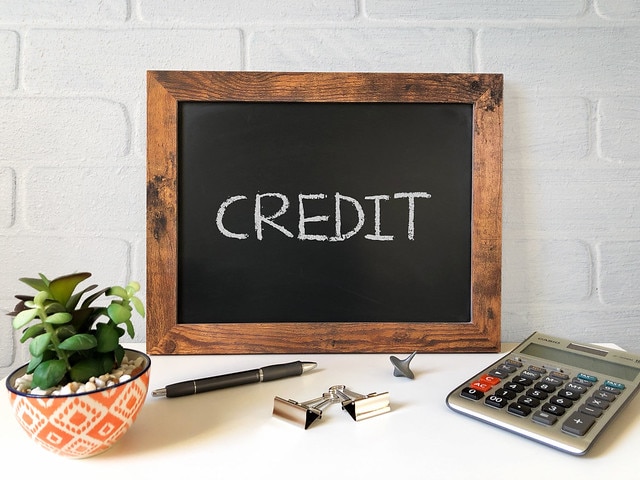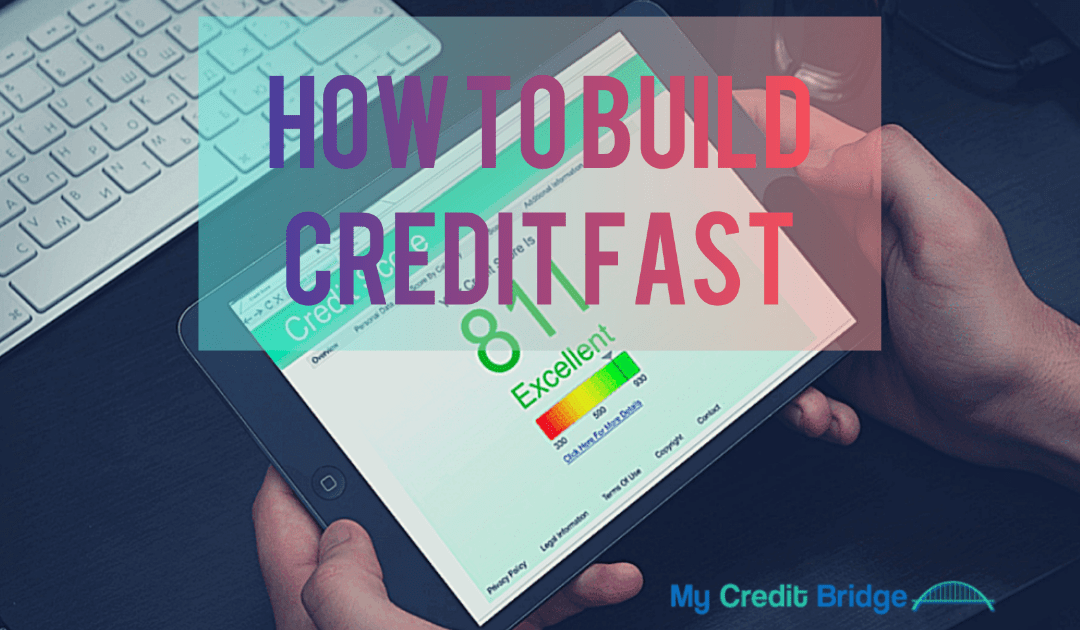YOU WILL LEARN HOW TO BUILD CREDIT FAST
Building credit can seem impossible whether you don’t have any at all or you just have bad credit accounts on your report. However, one thing I want you to remember, is that credit can always be repaired and rebuilt no matter the circumstances. That is a fact.
In this blog post, we will be going over how to build credit by understanding the two types of credit accounts you need and the 5 factors used by FICO to calculate your scores.
You need to fully understand all of it improve your credit profile to score a lot of points fast.
HOW DO YOU BUILD CREDIT?
First, we will go over the two types of credit accounts and how they affect your credit scores.
Understanding what counts as an actual credit account versus bills you pay for monthly will help you succeed faster with building credit.
And learning how to use these two types of credit accounts strategically will rapidly improve your credit scores.
Second, let’s talk about the 5 factors that FICO uses to calculate your scores. Your payment history, your credit utilization, the length of your credit history, the mix of your credit, and your new credit.
These 5 factors are what you will need to have at the top of your mind when you are either building credit for the first time or rebuilding your credit after a financial hardship or just from being plain irresponsible.
Please check out my previous blog posts, The 5 Reasons Your FICO Score is Low, 5 Credit Tips To Increase Your FICO Score and The Ultimate Guide To Raising Your Credit Score to better understand the 5 factors.
Let’s get back on track, now where were we? Oh, yea, two types of credit accounts.
THE TWO TYPES OF CREDIT ACCOUNTS
There are two forms of credit, revolving accounts, and installment accounts.
Revolving accounts are products such as credit cards, and lines of credit that can be recharged, such as a home equity line of credit, a.k.a. HELOC.
A HELOC is a line of credit secured by your home that gives you a revolving credit line that you can use for any expense or you can use it to consolidate debt. Any expense or debt really.
Installment accounts are any type of loan, personal loan, car loan, home loan, student loan, etc. The alternative to a HELOC is a Home Equity Loan.
A home equity loan is a second mortgage that allows you to borrow against the value of the equity in your home.
Your home equity is calculated by subtracting how much you still owe on your mortgage from the appraised value of your home.
For example, if you owe $150,000 and the appraised value of your home is $250,000, you can borrow up to $100,000.
Calculation
$250,000 (appraised value) – $150,000 (principle amount you owe) = $100,000
YOUR PAYMENT HISTORY
I can not stress this enough to you, your payment history is the number one factor that FICO uses to calculate your scores bar none.
It accounts for 35% of your FICO scores. Which means it can make or break your credit scores.
Pay all of your credit debts on time at all costs, you will thank yourself later when your scores continue to increase.
Paying credit debts on time score you the most points with FICO. Remember, paying 30 days late on a credit debt can cost you over 100 points in some cases.
Tip #1 – Your creditors can only report late payments to the credit bureaus if you pay 30 days late, not 5 days or even 29 days late, it has to be 30 days or more for it to be reported and negatively affect your FICO scores.
So, again, PAY YOUR CREDIT DEBTS ON TIME!!! Now that you are clear on payment history, its time to discuss the second highest contributing factor for your FICO scores: Credit utilization.
YOUR CREDIT UTILIZATION
Credit utilization accounts for 30% of your credit scores. Which makes it the second highest factor when it comes to calculating your FICO scores.
What is credit utilization? It is simply the amount of debt you owe on credit cards. Now pay attention, this is something many people get wrong.
Tip #2 – Credit utilization is not affected by debt owed on closed accounts, whether they are loans or credit cards. Only open credit card/revolving accounts affect your credit utilization.
For example, if you owe $500 on an open credit card that has a $1,000 limit, your credit utilization would be at 50%, which is way too high, ideally, you want it at 1%-3%, and never over 30%. If you can help it.
Calculation – $500 (Amount Owed) / $1,000 (Credit Limit) = 50% Credit Utilization
If this was a closed account, and your original creditor either did a write-off and reported the debt as a charge-off, or sold the debt and reported the debt as a collection, this would only affect your payment history and not your credit utilization.
Next, let’s go over your Length of Credit History.
YOUR LENGTH OF CREDIT HISTORY
We are getting to the next level of building credit, this is where you can score extra points over time, or immediately.
Your length of credit history accounts for 15% of your FICO scores. You can score big here by doing a few things many people fail at often.
Tip # 3 – Keep your credit accounts open at all costs. Your length of credit history adds up all of your payment history for each credit account and divide by the number of accounts you have to get the median number of years and/or months you have been paying on debts.
For example, let’s say John has 3 credit cards, one card has 10 years of payment history, the second card has 10 years, and the third card has 5 years of payment history on it. John’s length of payment history would be 8.33 years.
Calculation – 25 yrs (10 yrs + 10 yrs + 5 yrs) / 3 (Credit Cards) = 8.33 years length of history
Be careful not to negatively affect your length of credit history because it can cost you quite a few points on your FICO scores.

HURTING LENGTH OF CREDIT HISTORY
Some people hurt their credit scores without realizing it by closing one or two of these credit cards.
For example, using the same scenario from before, John now would like to close both of his credit cards that have 10 years of payment history because he has to pay an annual fee for them and on his third card, there is no such fee.
Leaving him with the one credit card that only has 5 years of payment history on it. Now his length of credit history is down to only 5 years, which will drop his credit score.
When you close an account it concludes the payment history. Meaning it ends that card’s length of payment history, instead of that history of payments continuing to score you more and more points as it ages.
Try to keep all of your current credit cards open and make payments at least once a month.
Tip #4 – Make transactions once a month to keep the credit card account active to prevent your creditor from closing the account for inactivity.
We are getting down to the last two factors now. Next, we have your credit mix.
CREDIT MIX
Understanding credit mix is simple, it’s just referring to your mix of credit accounts.
Remember, the only way to score points with credit is to have debt, meaning paying back debt you borrowed through credit cards and loans.
Tip #5 – For best results, you will need to have around four credit cards and 2-4 loans. A home loan and a car loan are valued more by FICO
That will score you the extra points needed to in the 800-club of FICO scores. You can achieve up to a 740 FICO score with only the first three factors.
To go over that score and get into the 800’s you have to get points from your credit mix.
NEW CREDIT
Finally, we are down to the last factor, and it is very important to understand how new credit affects your scores.
New Credit is affected by the number of inquiries you accumulate by applying for new credit accounts, and it represents 10% of your FICO scores.
Tip #6 – Do not accumulate more than 6 inquiries per year if you are being rejected by creditors/lenders.
Each inquiry can cost you 3-5 points, if your credit applications are being denied then you need to take a step back and repair and build your credit before you apply for any more unsecured credit cards or loans.
That was a lot to go over, now I want to talk to you about some resources you can use to build or rebuild your credit when you don’t have any at all, or if what you got isn’t enough
WAYS TO BUILD AND REBUILD YOUR CREDIT
If you have no credit or bad credit it will be difficult to obtain unsecured credit cards or loans. That means you will need to go after secured credit cards and loans.
I know what you’re thinking, I don’t want to put down $300 to get a secured credit card from a bank, or $500 down to secure a loan from a bank.
Lucky for you, nowadays you don’t have to.
SELF LENDER
I have my clients use SelfLender to build credit. It is a great company that will report your payments to all three credit bureaus without you having to secure a loan with your own funds.
You choose the amount you want to pay monthly and they charge an initial small one-time service fee, along with interest and the APR. After 24 months of payments, you will receive the money back minus the interest and APR accrued. It’s that simple.
To learn more about SelfLender and their fees click here.
RENTAL KARMA
Another resource you can use is Rental Karma. Many of us have been paying rent for years and years but never get any credit for it when it comes to our credit reports.
That is all in the past now that Rental Karma has arrived. This company will report all of your rental payments to the credit bureaus for a fee.
To learn more about Rental Karma and their fees click here.
AUTHORIZED USER ACCOUNT
A great way to add credit payment history and credit utilization is by adding an authorized user account to your credit profile.
An authorized user account simply means that you are not the primary cardholder, but you have been added as an authorized person to use the card, and in no way are obligated to repay a debt for the card.
Usually, to be added as an authorized user, the primary cardholder can just call their creditor and request to add you onto the card, and just provide them with your social security number, name, and date of birth.
The card is sent to the primary cardholder and their card’s payment history along with the balance and limit are reported onto your credit profile. It’s that simple.
Depending on your credit situation, you can really score a lot of points with just one authorized user account.
Tip #7 – Here are the Guidelines for choosing the ideal credit card to become an authorized user:
- The credit card account must have at least 24 months of “paid as agreed” payment history, meaning the cardholder cannot have been 30 days or more late paying on the card in the last 24 months.
- The balance on the card should not exceed 30% of the limit at any time. If the balance gets too high your credit utilization will go up and this will drop your credit scores.
After the housing bubble crash, the authorized user strategy has been limited as you now will have to have your own primary credit accounts.
Before the crash, you could only have authorized user accounts and it would be enough to get you the home loan.
CONCLUSION
I hope this has been helpful and that you feel confident in your ability to build or rebuild your credit. This blog post should’ve given you plenty of information to understand how to build credit fast.
If you have any questions please leave them in the comments and I will do my best to reply to them all.



